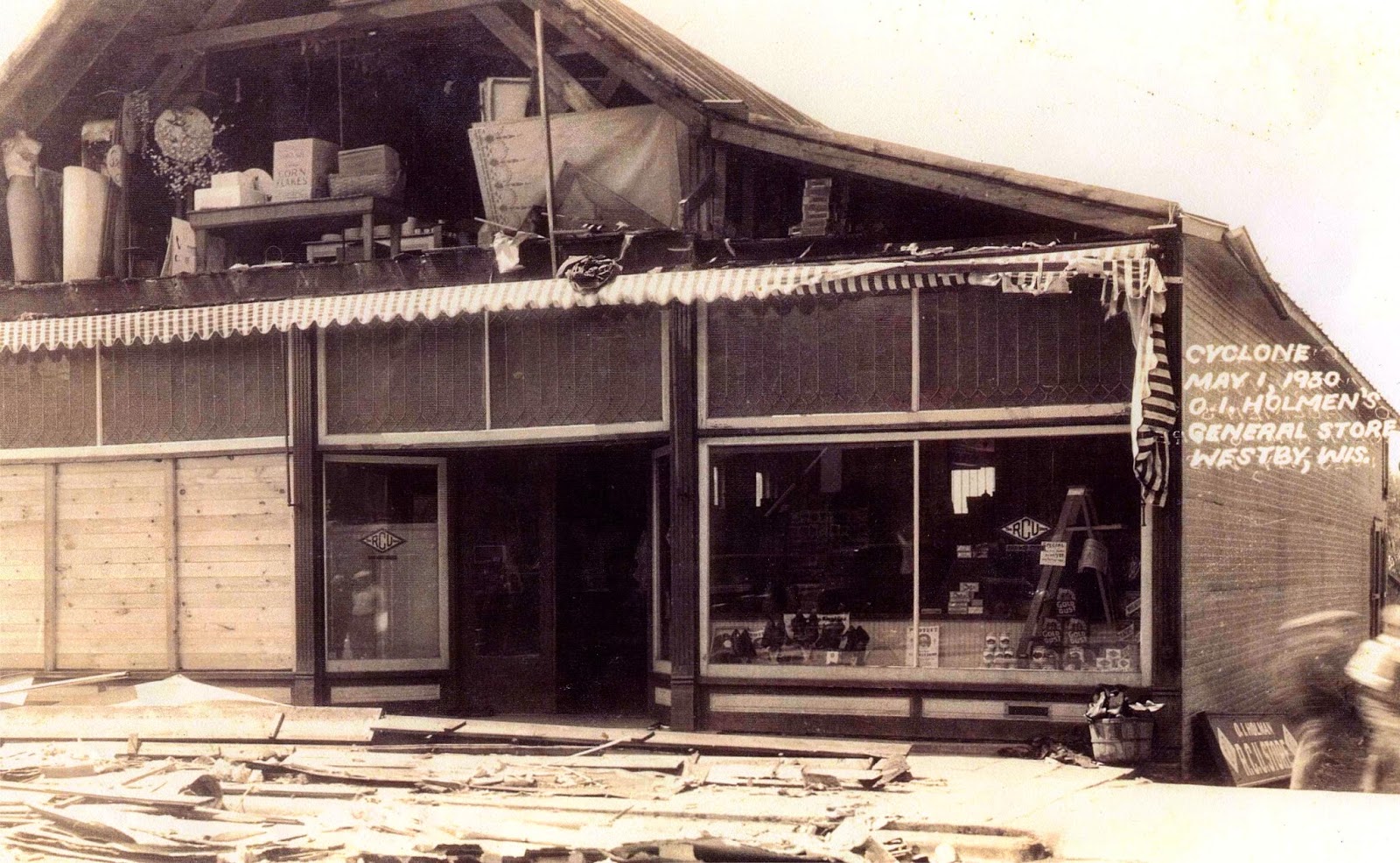Pioneers of this community will remember way back when most of the present site of Westby City was located within the limits of the Clockmaker school district. In 1880 a first school was established when Miss. Emile Westby (later Mrs. R.H. Nustad) opened a private school in a room above the Ole T. Westby store. In this school of more than half a century ago, the following were enrolled: Bennie Thoreson, Christian Hanson, Edward Peterson, Clara Syverson, Ole Swiggum, Peter Swiggum, Oliver Gilbertson, Nettie Westby, Olga Westby, Julius Westby, and Sarah Westby (now Mrs. Reque, still living in Westby).
In 1881, another private school was opened by Miss Matilda Gilbertson (later Mrs. E.C. Bergh) in a room over the Simon Syverson machine shop. In 1883, a new school district was formed which elected the following board of education: Andrew Moen, John Michelet and Simon Syverson—three staunch pioneers. The purchased a school site on Main Street (now occupied by a modern creamery) and built a two-story frame building. At first only one teacher was employed, but attendance increased and in the fall of 1885 it was necessary to employ two teachers and occupy the second story. The first teacher was Regina Gullord (Mrs. Anton Mitby) and she was school mistress for the eight grades. Other teachers of the period were Miss. Patience McGermott, Miss. Anna McGermott and Ida Gullord (later Mrs. John Rudie).
In the fall of 1893, because of a further increase in attendance, the upper grades were moved into the Temperance Hall across the street.
 |
|
Westby Temperance Hall located on South Main
|
The question of a new building and location was the paramount issue of the day. After considerable discussion the ground, now occupied by the present school building was acquired. This land, purchased from Wittus Bergum, consisted of two and one-fourths acres. At the annual meeting in July, 1908, the meeting voted to erect a new school building, the cost of which was limited to $20,000. The board at this time consisted of Mrs. Malla Neprud, director; Reverend Martin Gulbrandsen, treasurer; and Olaf Peterson, clerk, and it was due to their splendid vision and their untiring efforts that much progress was made in the school plans.
 |
|
Once the Westby schoolhouse was new and now
is forgotten, except to only a few
|
The class of 1910 was the last to graduated from the old graded school house, and the first to graduated from the new four year high school. The year 1910 witnessed the opening of the new school building and the introduction of the tenth grade into the Westby school system. It was also during this year that the movement for a four year high school culminated in victory when the voters of the community passed almost a unanimous vote for a Free High School. On August 19, 1911, C.P. Cary, then State Superintendent, signed the certificate of establishment for a Free High School. In 1911 and 1912 the complete four year high school course was introduced.
The years 1910 to 1914 were especially important ones in the development of secondary education in Westby. Many precedents were established that have been carried down to the present day. Not only was a curriculum of academic subjects organized that would permit students to enter the University of Wisconsin, but also a varied program of extra-curricular activities. Basketball (both boys and girls), forensics, literary clubs, annual and numerous other organizations were started that provided a well balanced program for the young men and women of that day. Alfred L. Godfrey served as principal from 1910 to 1912 and was succeeded by L.E. Weiland in 1912. In 1914 the first Westby High School class was graduated. Graduates were: Eugene Ballsrud, Magna Davidson, Joel Hendrickson, Reuben Hagen, Otis Holman, Paula Mockrud, Dorothy Kingslien, Axel Nestingen, Ester Neprud, Olga Reque, Albin Saugstad, Henry Sveum, Harold Stevlingson, and Earl Unseth. L.E. Weiland served as administrative head of the school from 1912 to 1922. During this time there was a gradual increase in enrollment and a broadening of the school curriculum.
 |
| For many years, the high school was on the left, gymnasium in the middle and grade school on the right. Anyone remember the tunnel connecting the high school with the grade school |
Mr. A.P. Euler, succeeded Mr. Weiland and served as Principal from 1922 to 1927. During Mr. Euler’s administration significant additions to the curriculum were made. The voters approved the organization of a more complete science course, the re-installment of the kindergarten (which had been voted out in 1916), a manual training and domestic science department. A barrack was erected to house the domestic science department, which building after the completion of the new high school, became known as the band building. Band practices were held here regularly, first under the able baton of the late Otto Brown, and later under the direction of Victor Olsen, present bank instructor. This building the past year had been re-located and serves as the garage for the school busses. To Mr. Euler and the school board of that time also goes the credit of paving the way for a new building, the present high school. This building, constructed at a cost of $74,000, was ready for occupancy in 1925. This new high school made it possible to delegate the other structure completely to the grades and to relinquish the old site on main Street. Board members during this period were: H.O. Stevlingson, Richard Grimsrud, Sr., Emil Sveen, J.T. Hage, Dr. O.T. Nestingen, Mrs. L.C. Bekkedal and Mrs. J.O. Holum.








bU3hqw~~60_3.JPG)


































